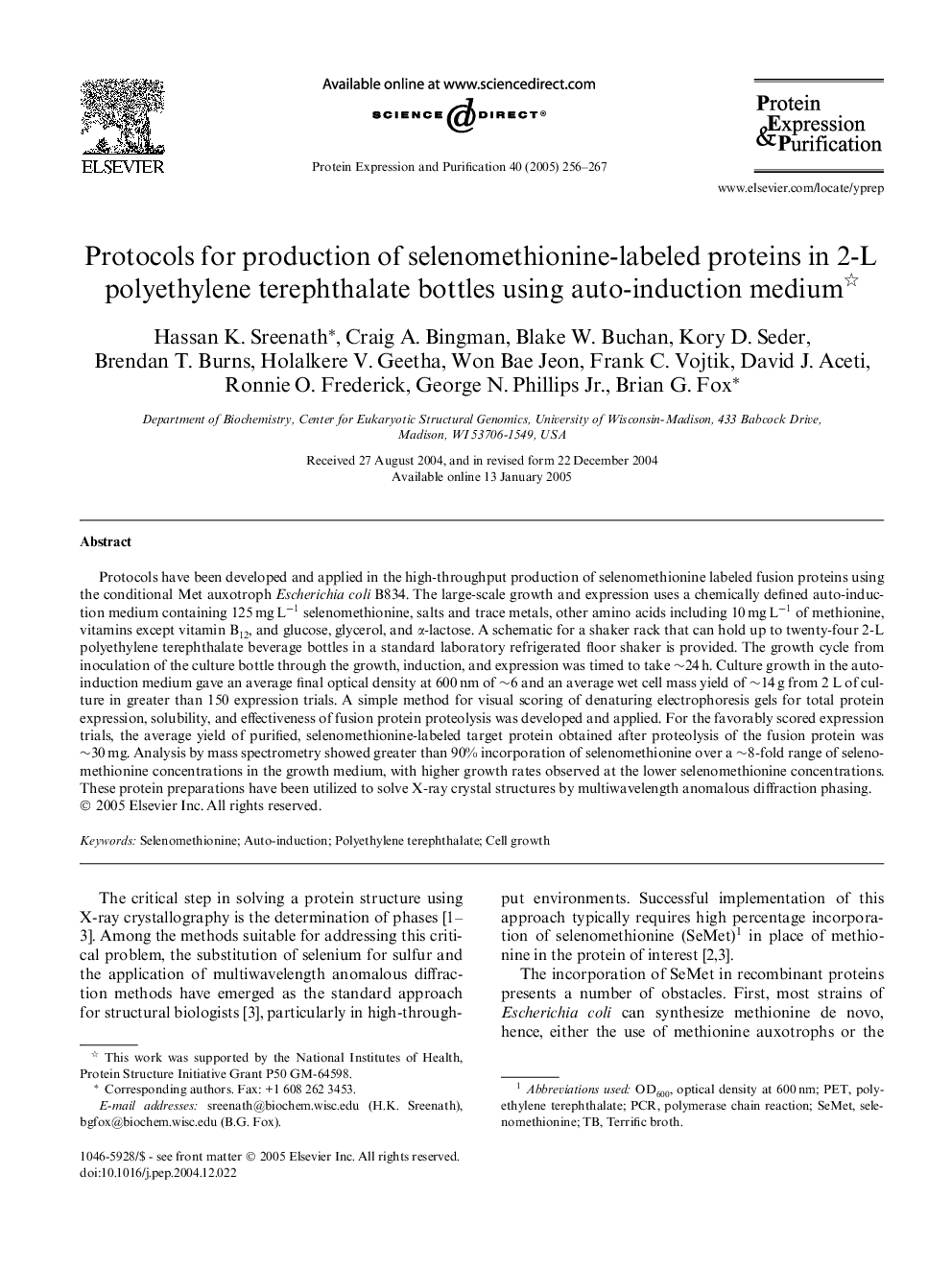| Article ID | Journal | Published Year | Pages | File Type |
|---|---|---|---|---|
| 9894297 | Protein Expression and Purification | 2005 | 12 Pages |
Abstract
Protocols have been developed and applied in the high-throughput production of selenomethionine labeled fusion proteins using the conditional Met auxotroph Escherichia coli B834. The large-scale growth and expression uses a chemically defined auto-induction medium containing 125 mg Lâ1 selenomethionine, salts and trace metals, other amino acids including 10 mg Lâ1 of methionine, vitamins except vitamin B12, and glucose, glycerol, and α-lactose. A schematic for a shaker rack that can hold up to twenty-four 2-L polyethylene terephthalate beverage bottles in a standard laboratory refrigerated floor shaker is provided. The growth cycle from inoculation of the culture bottle through the growth, induction, and expression was timed to take â¼24 h. Culture growth in the auto-induction medium gave an average final optical density at 600 nm of â¼6 and an average wet cell mass yield of â¼14 g from 2 L of culture in greater than 150 expression trials. A simple method for visual scoring of denaturing electrophoresis gels for total protein expression, solubility, and effectiveness of fusion protein proteolysis was developed and applied. For the favorably scored expression trials, the average yield of purified, selenomethionine-labeled target protein obtained after proteolysis of the fusion protein was â¼30 mg. Analysis by mass spectrometry showed greater than 90% incorporation of selenomethionine over a â¼8-fold range of selenomethionine concentrations in the growth medium, with higher growth rates observed at the lower selenomethionine concentrations. These protein preparations have been utilized to solve X-ray crystal structures by multiwavelength anomalous diffraction phasing.
Related Topics
Life Sciences
Biochemistry, Genetics and Molecular Biology
Biochemistry
Authors
Hassan K. Sreenath, Craig A. Bingman, Blake W. Buchan, Kory D. Seder, Brendan T. Burns, Holalkere V. Geetha, Won Bae Jeon, Frank C. Vojtik, David J. Aceti, Ronnie O. Frederick, George N. Jr., Brian G. Fox,
